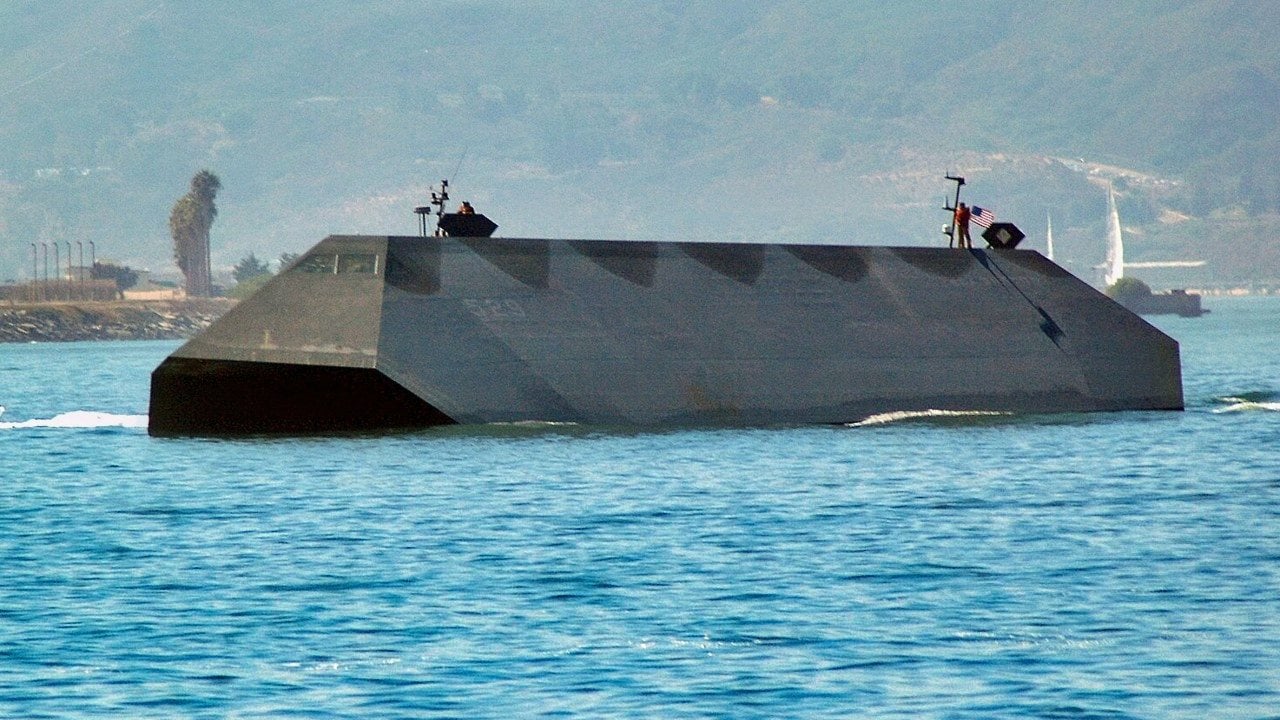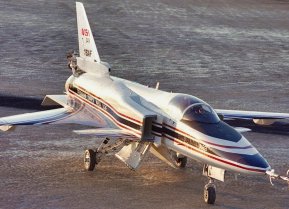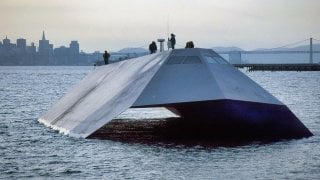Sea Shadow: The U.S. Navy's Forgotten Stealth Ship That Failed
Dubbed the Sea Shadow (IX-529), it was developed in great secrecy – and while it may have been a "stealth ship" it wasn't in fact invisible to the naked eye.
The Sea Shadow – History's Forgotten Stealth Ship - Though Lockheed's "Skunk Works" is remembered for developing a number of now famous aircraft – including the U2 Dragon Lady and SR-71 Blackbird – in the late 1970s, a decision was made to extend its stealth capabilities into the realm of submarines.
It might seem like an odd choice, submarines are already essentially difficult to see or track when submerged.
But the idea was born when Ben Rich, the head of the Skunk Works office, had to tell a company photographer that there was no problem with the camera being used to photograph the then-secret F-117. The photos kept coming out blurry, but that was because the stealthy coatings and shaping of the airplane interfered with the camera's sonar-like device used to focus, making the images appear fuzzy.
According to Lockheed Martin, Rich soon realized he could apply the stealth technology of the F-117 to a submarine, making it undetectable on sonar. It was found that those angular surfaces could actually bounce sonar signals away and also muffle the engine sounds and the internal noises of crewmen inside the vessel.
The Skunk Works team subsequently ran numerous acoustical tests in special sound-measuring facilities and obtained dramatic improvements.
However, the Department of Defense (DoD) actually didn't show interest in this type of investigation until Rich adapted the idea for use with surface ships. That led to a Defense Advanced Research Projects Agency (DARPA) contract to apply stealth concepts and materials to surface vessels and to test the effects of seawater on radar-absorbing materials.
Sea Shadow: A Truly Secret Stealth Program
Dubbed the Sea Shadow (IX-529), it was developed in great secrecy – and while it may have been a "stealth ship" it wasn't in fact invisible to the naked eye. In fact, with its unique Small Waterplane Area Twin Hull (SWATH) design, which gave it a catamaran-type shape, it would be hard to miss.
"The initial design consisted of a cigar-shaped hull that was shielded by an outer wall of flat, angular surfaces," Lockheed Martin noted.
It was thus assembled out of sight within a submersible barge in Redwood City, California, near San Francisco. Noted naval historian and military analyst H I Sutton suggested the hangar, dubbed the Hughes Mining Barge (HMB-1), was an ideal home for the secret project. Lockheed even bought in naval architects from local firms to help undertake the project.
It was fitting that a top-secret boat was built near a large U.S. city with almost no one noticing!
"This being the 1980s, all the plans were done on paper. The vessel might look futuristic even today, but the technology on the ground would be hard to imagine today," Sutton wrote.

Rough Sailing
It was far from a massive vessel, just 156 feet in length, and only required a crew of four that consisted of a commander, helmsman, navigator, and engineer.
However, its first trials in 1981 could be described as underwhelming.
The ship's wake was unexpectedly huge and thus detectable with sonar and from the air. The problem was discovered to be from the motor propellers, which had been installed backward. After addressing the issue, the project moved forward and the vessel was completed in 1984. It subsequently underwent night trials in 1985 and 1986, but the Sea Shadow never advanced beyond the testing phase.
Yet, some of what was learned in the testing was applied to other naval technology including submarine periscopes, while the lessons learned also were applied to new U.S. Navy warships, notably the DDG 1000 Zumwalt-class.
Public Debut
Only in 1993, the public was given a view of the experimental stealth ship – and it likely inspired the maker of the James Bond films.
A key plot element of the 1997 James Bond film Tomorrow Never Dies involved media baron Elliot Carver (Jonathan Pryce) using a stealth ship to destroy a Royal Navy frigate to almost start World War III. The fictional Dolphin II was supposed to be far more massive – and some serious suspension of disbelief is required to suggest that even a billionaire could build such a vessel in secret (but perhaps we should check in on Elon Musk more often).
Sold for Scrap
After being placed out of service and laid up at Naval Station San Diego in 1994, and then moved to NAS Alameda in 1999, the Sea Shadow was struck from the Naval Register on August 22, 2006. What is notable is that the same year the U.S. Navy offered the prototype for sale, but it garnered little interest.
Not even a would-be supervillain stepped up to place a bid.
Perhaps one issue with the offer was that the buyer couldn't sail the ship and could only scrap it. Why it wasn't offered to a museum or other institution isn't clear, but likely it was an issue of the technology on board. Sea Shadow was finally sold for scrap in 2012… or at least that is what a potential villain would have you believe.
Author Experience and Expertise
Peter Suciu is a Michigan-based writer. He has contributed to more than four dozen magazines, newspapers, and websites with over 3,200 published pieces over a twenty-year career in journalism. He regularly writes about military hardware, firearms history, cybersecurity, politics, and international affairs. Peter is also a Contributing Writer for Forbes and Clearance Jobs. You can follow him on Twitter: @PeterSuciu.
All images are Creative Commons.


